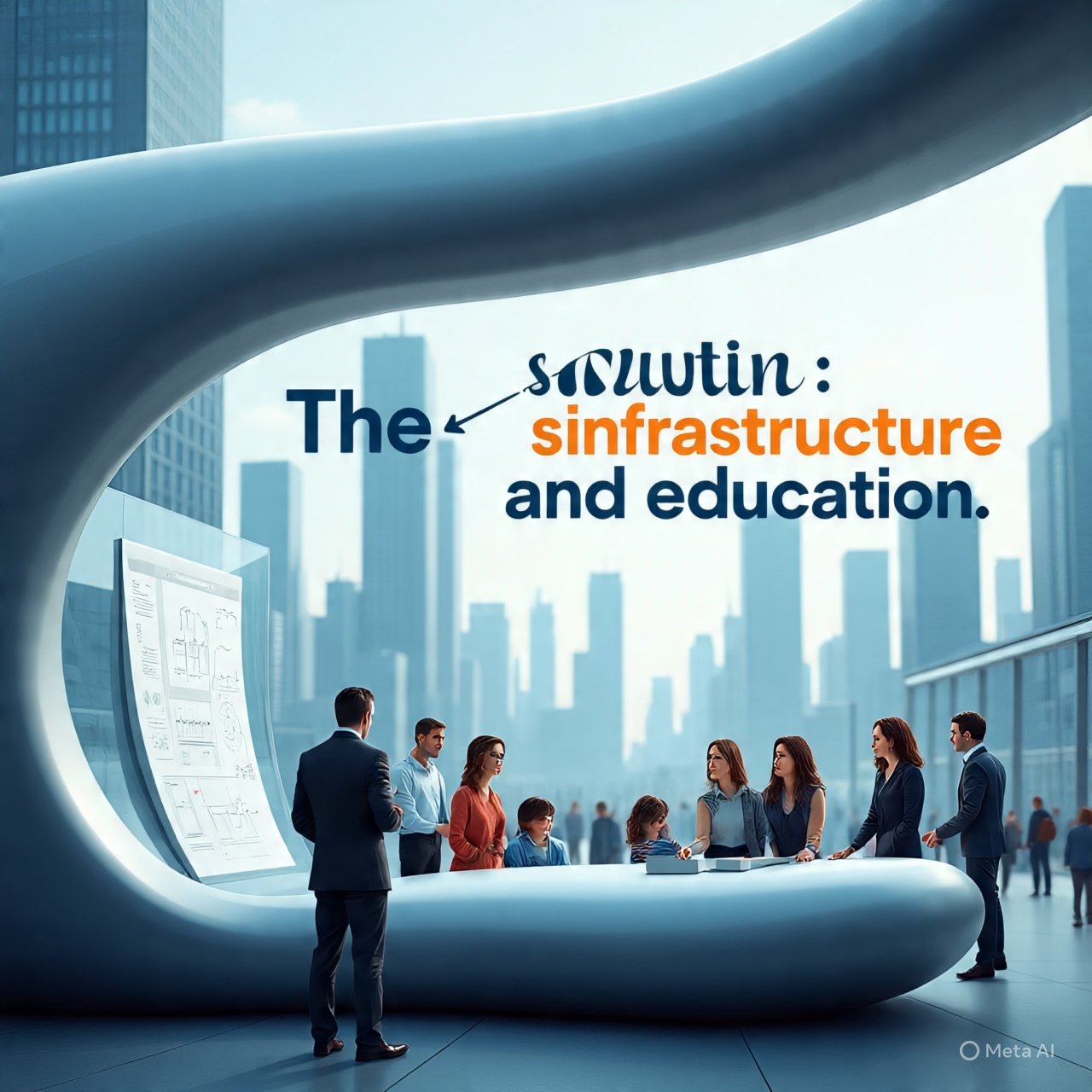Digital Minimalism – Revolutionizing Focus in the Digital Age
Introduction
In the current digital era where endless streams of notifications, alarms, and digital interruptions surround us, human attention span has reached historically low levels. On average, an individual faces 200 to 300 notifications daily, making deep focus a rare commodity. In this context, the philosophy of digital minimalism is emerging as a beacon of hope. It is not merely about reducing digital device usage, but rather a comprehensive system that designs our digital lives in such a way that our attention remains under our control. This article will comprehensively explore the new frameworks of digital minimalism, their psychological principles, practical applications, and methods for focus purification.
New Philosophy of Digital Minimalism: Beginning of Intentional Digital Life
The modern philosophy of digital minimalism presents a concept of digital life where every technology serves our purposes, rather than us serving it. This philosophy is built on three fundamental pillars: Intentional Use, Quality Choice, and Autonomy. Intentional Use means every digital interaction should occur under a predetermined purpose, not aimless scrolling. Quality Choice means we include fewer but higher quality things in our digital activities. Autonomy means we have complete control over our attention, not platform algorithms. Modern digital minimalism introduces the concept of “Focus Budgeting,” where we view our daily attention as a limited resource and create a budget for it. Every digital activity gets its share from this budget, and we ensure that our precious attention is not wasted on trivial tasks. This philosophy takes us from digital consumerism to digital citizenship, where we become active users of technology rather than just being used by it.
New Model of Attention Economy: Management of Digital Assets
In this new model of attention economy, we manage our attention as valuable capital. This model works on four key principles: Attention Valuation, Digital Assets, Attention Investment, and Digital Return. In Attention Valuation, we conduct cost-benefit analysis of every digital activity, including mental energy expenditure along with time. Digital Assets involve identifying digital activities that provide real value, such as online courses, research papers, or productivity tools. Attention Investment means focusing our attention on activities that provide long-term benefits. Digital Return involves measuring these benefits. Under this model, we divide our digital time into three categories: Productive, Constructive, and Recreational. We ensure that most of our digital time is spent in the first two categories.
System of Digital Boundaries: Restoring Mental Solitude
The system of digital boundaries is extremely important in digital minimalism. These boundaries are established at four levels: Time Boundaries, Space Boundaries, Mental Boundaries, and Social Boundaries. Time boundaries limit digital device usage at specific times, such as turning off all digital devices after 8 PM. Space boundaries create digital-free zones in specific places (like bedrooms, dining tables). Mental boundaries protect our minds from digital interruptions, such as turning off all notifications during work. Social boundaries establish rules for digital interactions with others, such as specific times for phone calls. To establish these boundaries, we follow the principles of “Digital Hygiene,” which includes regular digital cleaning, device-free periods, and digital detox.
Implementation of Practical Frameworks: Four-Step Process
The practical frameworks of digital minimalism can be divided into four implementation stages: Assessment, Decluttering, Design, and Maintenance. In the Assessment stage, we conduct a complete audit of our current digital usage, including digital time measurement, app usage analysis, and notification pattern study. In the Decluttering stage, we remove unnecessary digital activities and apps, including organizing digital items and cleaning digital clutter. In the Design stage, we design our new digital life, including creating digital routines and arranging digital environment. In the Maintenance stage, we maintain this new digital life, including regular review and necessary adjustments. Specific tools and techniques are used for each stage, such as digital time tracking, app usage monitors, and focus tracking devices.
Psychological Benefits and Mental Health: Scientific Evidence
The psychological benefits of digital minimalism have been proven by numerous scientific studies. It strengthens our brain’s prefrontal cortex, which is responsible for decision-making and self-control. It restores our brain’s default mode network, essential for creative thinking and self-reflection. It improves our memory because constant interruptions affect our long-term memory capacity. It reduces our anxiety and depression caused by continuous digital overload. It improves our sleep quality, especially by limiting digital device usage before sleep. According to modern neuroscience, digital minimalism changes our brain’s neuroplasticity in a positive direction, improving our cognitive abilities.
Application in Professional Life: Increasing Productivity
Specific strategies are required for applying digital minimalism in professional life. These include digital communication protocols, meeting management systems, and email management techniques. In digital communication protocols, we determine which channel will be used for what type of messages, such as Slack for instant messages and email for formal messages. In meeting management systems, we eliminate unnecessary meetings and conduct remaining meetings effectively. In email management techniques, we set specific times for checking email and use email folders. Through these strategies, we can increase our productivity by 30-40%.
Digital Balance in Family Life: Strengthening Relationships
Implementing digital minimalism in family life requires a family digital policy. This policy includes digital device usage times, family digital-free zones, and rules for family digital activities. Family digital-free zones are places where digital devices are prohibited, such as dining tables and living rooms. Family digital activities include activities that families do together on digital devices, such as watching educational videos or playing online games. This policy strengthens family relationships and restores the value of family time.
Healthy Relationship with Technology: Restoring Balance
The goal of digital minimalism is to establish a healthy relationship with technology. This relationship has four important aspects: Awareness, Agency, Balance, and Purpose. Awareness means we know how technology is affecting our attention. Agency means we can make our own decisions about technology use. Balance means we establish balance between digital and non-digital activities. Purpose means every digital interaction occurs under a clear purpose. This relationship teaches us how to live better with technology, not without it.
New Formation of Digital Habits: Behavior Change
Digital minimalism follows behavior change principles for forming new digital habits. This process has four stages: Identification, Options, Action, and Reinforcement. In the Identification stage, we recognize our current digital habits. In the Options stage, we find alternative methods. In the Action stage, we implement new habits. In the Reinforcement stage, we strengthen these new habits. Specific techniques are used for each stage, such as habit stacking, implementation intentions, and positive reinforcement.
Social Impact and Cultural Change: Social Improvement
The social impacts of digital minimalism are far-reaching. It improves our social relationships because we can focus on real people rather than digital devices. It increases our community participation because we have time to participate in local activities. It improves our physical health because we become more active due to reduced digital device usage. It improves our mental health because we are free from the stress of continuous digital overload.
Application in Educational Institutions: Improving Educational Standards
Specific policies and practices are required for implementing digital minimalism in educational institutions. These include digital literacy education, guidelines for digital device usage, and digital wellbeing programs. Digital literacy education teaches students how to use digital devices in a balanced way. Guidelines for digital device usage determine when and how digital devices will be used in classrooms. Digital wellbeing programs monitor students’ digital health.
Solutions Through Technology: Using Modern Tools
Numerous solutions are available for digital minimalism through technology. These include focus apps, digital wellbeing tools, and productivity software. Focus apps help us block distractions. Digital wellbeing tools monitor our digital usage. Productivity software helps us organize our tasks. Using these tools helps us manage our digital lives better.
Measurement and Evaluation Standards: Checking Success
Specific metrics are required to measure the success of digital minimalism. These include attention spans, digital time analysis, mental clarity scores, and productivity measures. Attention spans tell us how long we can maintain continuous focus. Digital time analysis tells us how we are using our digital time. Mental clarity scores tell us how mentally clear we are. Productivity measures tell us how much work we are able to do.
Future Possibilities and Trends: Determining New Directions
There are numerous possibilities for the future of digital minimalism. Integration with AI could revolutionize this field. Through virtual reality, digital experiences can be designed in a more controlled way. Through neurotechnology, we can directly monitor our brain activity. These technologies could take digital minimalism to new heights.
Spiritual and Ethical Aspects: Search for Inner Peace
The spiritual and ethical aspects of digital minimalism are also important. It gives us the opportunity to listen to our inner voice. It teaches us to live in the present moment. It helps us live life according to our goals and values. It gives us the opportunity to build deeper relationships with others.
Conclusion: New Definition of Freedom
Digital minimalism is actually a new definition of freedom. It liberates us from digital slavery. It gives us complete control over our attention. It gives us the authority to set our life priorities. It gives us the opportunity to live a peaceful and purposeful life. By adopting digital minimalism, we can not only improve our personal lives but also contribute to building a better society.


